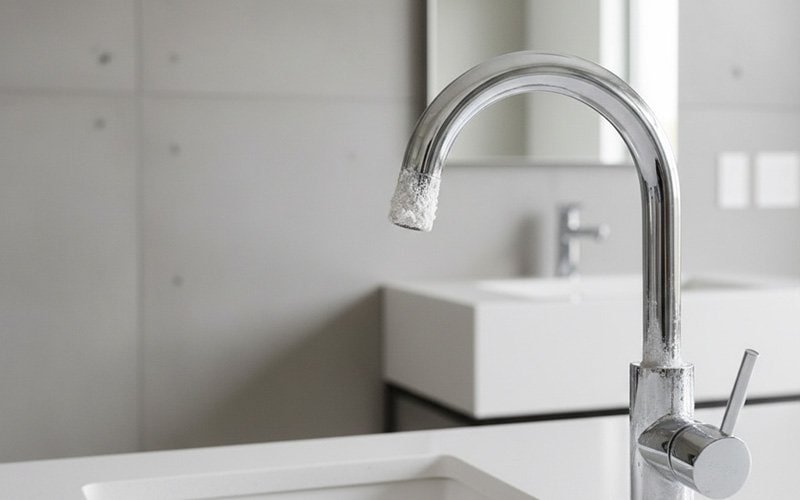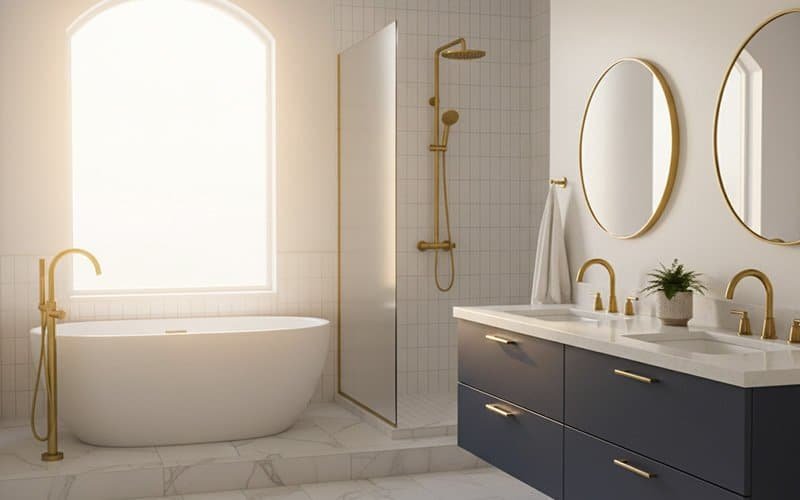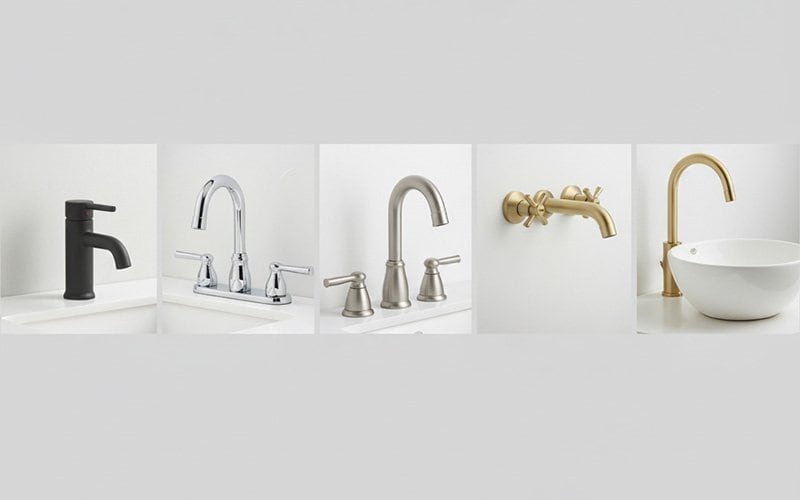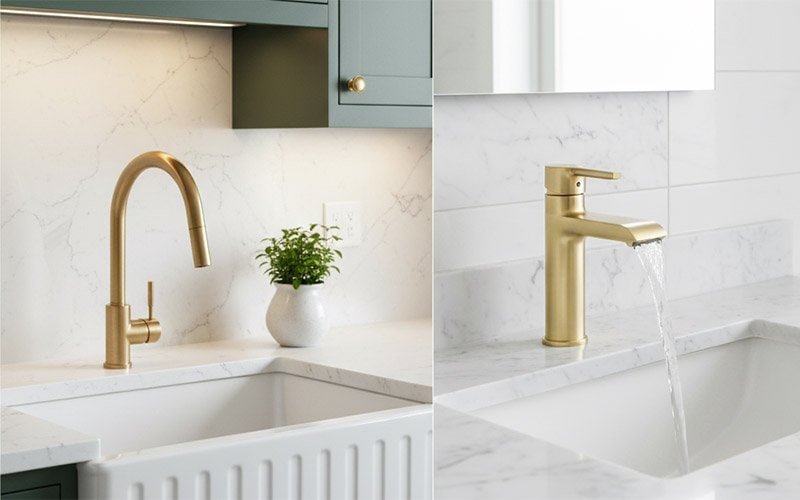Table of Content
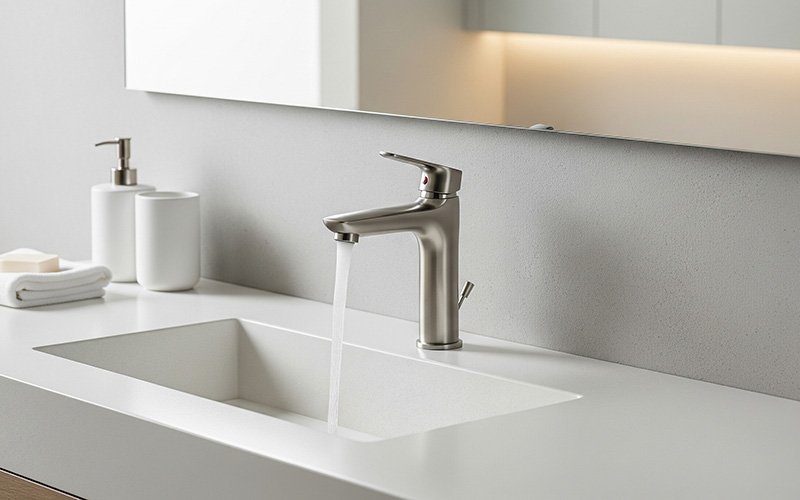
This guide provides general information to help you navigate the process of choosing a bathroom faucet. Please note that product specifications, features and availability can vary, so it is important to verify details with the manufacturer or retailer before making a purchase.
The selection of a bathroom faucet is a process that balances technical requirements with design preferences. This guide methodically outlines the selection process to assist you in making a well-informed decision for your space.

Step 1: Pre-Purchase Planning and Measurement
Before looking at any faucets, the first step is to understand the specific requirements of your space. This foundational work is a critical step for compatibility and can help prevent installation problems.
Determine Your Sink’s Configuration
The most important factor is the number and spacing of the pre-drilled holes in your sink or countertop, as this dictates the type of faucet you can install.
- Single-Hole: A single fixture containing the spout and handle(s) installs through one hole. If your sink has extra holes, they can be covered with a base plate called an escutcheon.
- Centerset: Designed for three-hole sinks, these faucets have a spout and two handles on a single base unit. The distance between the centers of the outer holes is a standard 4 inches.
- Widespread: This configuration has three separate pieces—a spout and two handles. It is used with three-hole sinks where the distance between the handle centers is typically 6 to 16 inches.
Measure for Spout Height and Reach
To select a functional faucet and reduce the likelihood of splashing, measure the ideal spout height and reach for your sink.
- Spout Height: The vertical distance from the countertop to the spout’s highest point.
- Spout Reach: The horizontal distance from the faucet’s base to the center of the water stream.
A well-proportioned faucet’s spout should reach near the middle of the sink basin. 7 A tall, high-arc spout paired with a shallow sink can cause splashing, while a spout with too little reach can make handwashing awkward.
Vessel sinks, which sit on top of the counter, require taller faucets specifically designed to clear the high rim.
Consider a Wall-Mount Faucet
If your sink has no holes, a wall-mount faucet is an option. This style is installed directly into the wall, creating an uncluttered countertop. However, installation is more complex and costly, as it requires a separate, concealed valve and plumbing work inside the wall.
Step 2: Evaluate Quality and Durability
Once you know the required size and configuration, the next step is to assess the faucet’s construction. Its internal components and body material are key indicators of its potential longevity.
Assess the Faucet Body Material
The material used for the faucet body determines its structural integrity. A heavier faucet often indicates a higher metal content.
- Solid Brass and Stainless Steel: These materials are widely recognized for their durability. They are highly resistant to corrosion and have a long lifespan, making them ideal for plumbing fixtures. Faucets sold in the U.S. must meet standards that limit lead content.
- Zinc and Zinc Alloys: These are less expensive alternatives but are also less durable and more prone to corrosion over time.
- Plastic: Found in the lowest-priced models, plastic is the least durable option and is not recommended for long-term use.
You can often identify the material by reading the product description, feeling the weight of the faucet, or looking inside the spout—a coppery hue suggests brass, while a dull gray may indicate zinc.
| Material | Key Characteristics | Pros | Cons |
|---|---|---|---|
| Solid Brass | Heavy, corrosion-resistant | Very durable, long-lasting | Higher initial cost |
| Stainless Steel | Naturally lead-free, strong | Highly durable, lead-free | Higher initial cost |
| Zinc Alloy | Lighter weight, less expensive | Budget-friendly | Less durable, prone to corrosion |
| Plastic | Lightest weight, lowest cost | Very inexpensive | Least durable, susceptible to cracking |
Check the Valve Technology
The valve (or cartridge) controls the water flow and is the key component for preventing drips.
- Ceramic Disc Valves: This is the modern standard. Two hard ceramic discs create a watertight seal. Because they are highly durable, they are designed to provide reliable, drip-free performance, and a ceramic disc valve is a recommended feature for any new faucet.
- Other Valve Types: Older technologies include cartridge, ball, and compression valves. While still functional, they are generally more prone to wear and require more maintenance than ceramic disc valves.
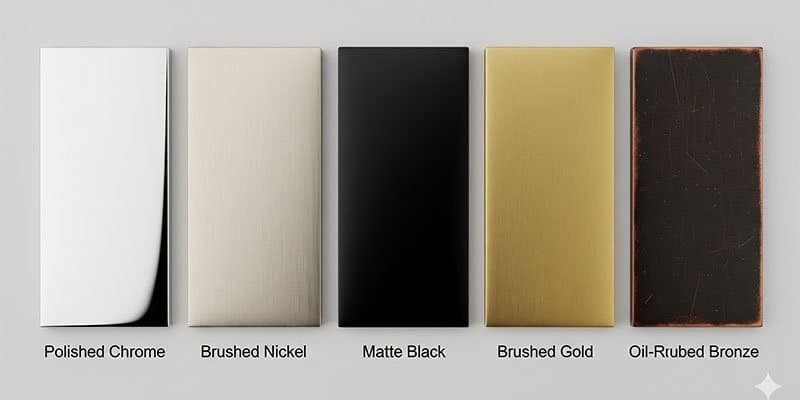
Step 3: Choose Your Style, Finish, and Features
With the technical requirements and quality benchmarks established, you can now focus on the aesthetic and functional details that fit your needs and taste.
Select a Finish
The faucet’s finish plays a major role in the bathroom’s overall design. For a cohesive look, coordinate it with other hardware like towel bars and light fixtures.
- Polished Chrome: A classic, durable finish that is easy to clean but shows water spots.
- Brushed & Satin Nickel: A popular choice with a matte look that can help hide fingerprints and water spots.
- Matte Black: A bold, modern finish that provides high contrast and hides water spots but can show dust.
- Brass & Gold Tones: Warm finishes that are available in modern brushed varieties that are easier to maintain.
- Oil-Rubbed Bronze: A dark, rich finish often used in traditional or rustic designs. It can be a “living finish” that develops a patina over time.
The durability of some modern finishes is enhanced by a process called Physical Vapor Deposition (PVD), which bonds the finish to the faucet at a molecular level, a feature description that indicates high resistance to scratches and tarnishing.
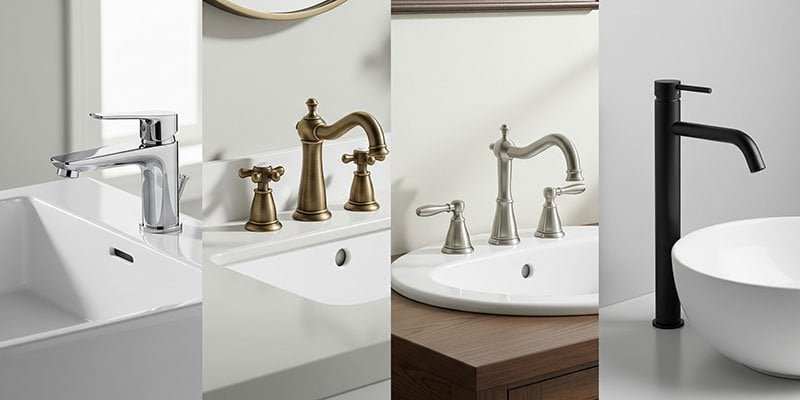
Match the Faucet Style
The faucet’s overall shape should align with your bathroom’s decor. Common styles include:
- Modern/Contemporary (clean, geometric lines)
- Traditional (ornate, curved details)
- Transitional (a blend of modern and traditional)
- Industrial/Rustic (utilitarian forms)
Pick a Handle Type
Consider the ergonomics and ease of use when selecting a handle.
- Lever Handle: The most common type, easy to operate and often ADA-compliant.
- Cross Handle: A classic design that provides a good grip.
- Knob Handle: Simple, rounded handles.
Single-handle faucets offer convenient one-handed operation, while two-handle models allow for more precise temperature adjustments.

Step 4: Finalize Your Purchase
Before you buy, there are a few final considerations to help you make the right choice.
Understand Retail Channels
It is a common practice for some manufacturers to produce different product lines for different sales channels. This means a faucet sold at a mass retail store may have different internal components than a model with a similar appearance sold at a dedicated plumbing supply showroom.
Products intended for plumbing supply houses, which primarily serve trade professionals, are often constructed to meet professional standards for durability and serviceability. While the cost may be higher at a supply house, the product may be constructed with different materials.
Review a Final Checklist
Avoid common purchasing mistakes by double-checking these key points:
- Sink Compatibility: Does the faucet’s mounting type match the holes in your sink?
- Proper Scale: Is the spout height and reach appropriate for your sink basin?
- Material Quality: Is the faucet made of solid brass or stainless steel for durability?
- Drain Assembly: Is a matching pop-up drain included, or do you need to purchase one separately?

Step 5: Plan for Installation and Long-Term Care
Proper installation and maintenance can help protect your investment.
Understand the Warranty
Most reputable manufacturers offer a Limited Lifetime Warranty on the faucet’s mechanical parts and finish for the original residential purchaser. Note that these warranties are typically voided by improper installation or the use of abrasive cleaners. Electronic components on smart faucets are usually covered by a much shorter warranty (normally 1 to 5 years).
Decide: DIY or Professional Installation?
- Consider DIY for a simple, like-for-like replacement on a modern sink with accessible plumbing. You will need basic plumbing skills and tools like a basin wrench.
- Hire a Professional for complex installations (like a wall-mount), if you’re dealing with old or non-standard plumbing, or if you want the peace of mind that comes with a workmanship guarantee. The cost of repairing water damage from a DIY mistake is almost always higher than the initial cost of professional installation.
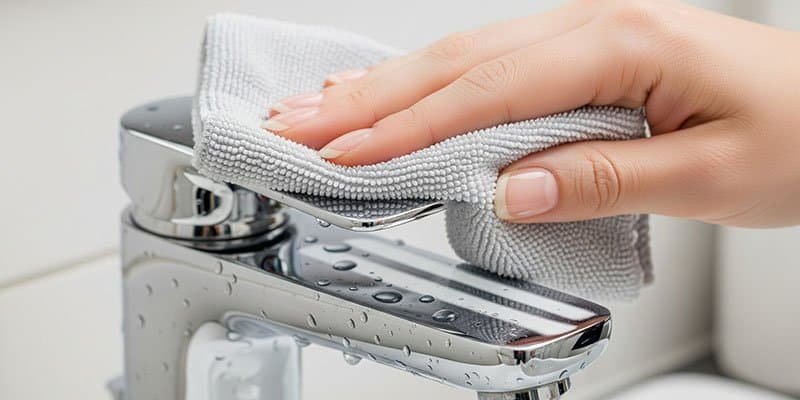
Maintain Your Faucet
To protect the finish, avoid all abrasive cleaners, scouring pads, and harsh chemicals. For routine cleaning, use a soft, damp cloth with mild soap, then rinse and dry thoroughly to prevent water spots. Periodically unscrew and rinse the aerator to clear any debris and maintain strong water pressure.
Conclusion
By considering the factors outlined in this guide, you can choose a faucet that is well-suited to your needs and offers features designed for long-term performance. The process starts with confirming compatibility with your existing sink and plumbing.
Next, prioritize material quality by looking for solid brass construction and a ceramic disc valve. With these technical requirements met, you can then focus on choosing a finish, style, and handle type that fits your bathroom’s design and your functional needs.
Related Posts




